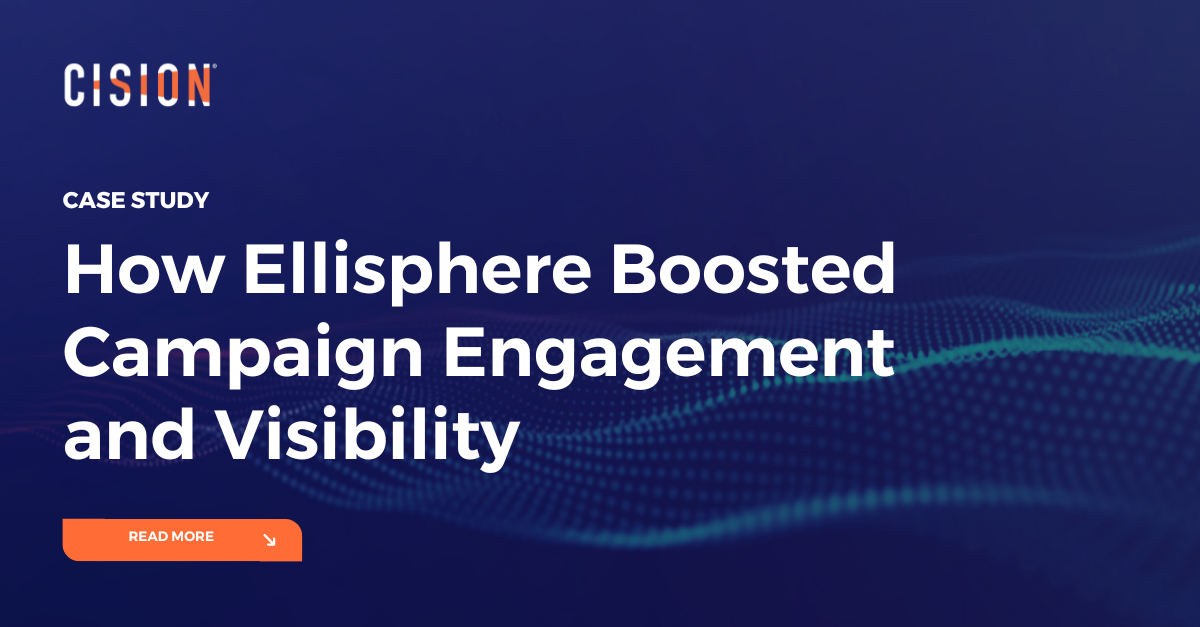ESG has been on the radar of PR and communications teams for some time, with businesses carefully crafting narratives to make clear their positions on all things environmental, social and governance. Yet with the post-Covid recovery, Russia’s invasion of Ukraine and instability in the global economy, long-term growth in media discussion around the topic has faded. Shareholder pressure may have forced some firms to stall ESG commitments, but economic headwinds shouldn’t mean it's ignored.
Cision’s recent report, ESG Communication Trends: The Post-Pandemic Evolution of the Public ESG Debate, looks at where the debate currently sits and offers insight on how strategic communicators can support ESG initiatives. Here are three notable lessons from the report for comms teams to take note.
Lesson 1: Long-term ESG messaging shouldn’t be deterred by economic turbulence
Economic challenges across 2022 and 2023, driven by spiralling interest rates and instability in the energy market, prompted a drop in ESG media coverage. However, Cision data tells a slightly different story for social: though the number of high impact articles peaked in March 2022, social media content has recently started to rise again. The March 2023 surge seen below was prompted by President Joe BIden’s use of a veto to defend the use of ESG as investment criteria for pension funds.
ESG Discussion Across Traditional and Social Media:
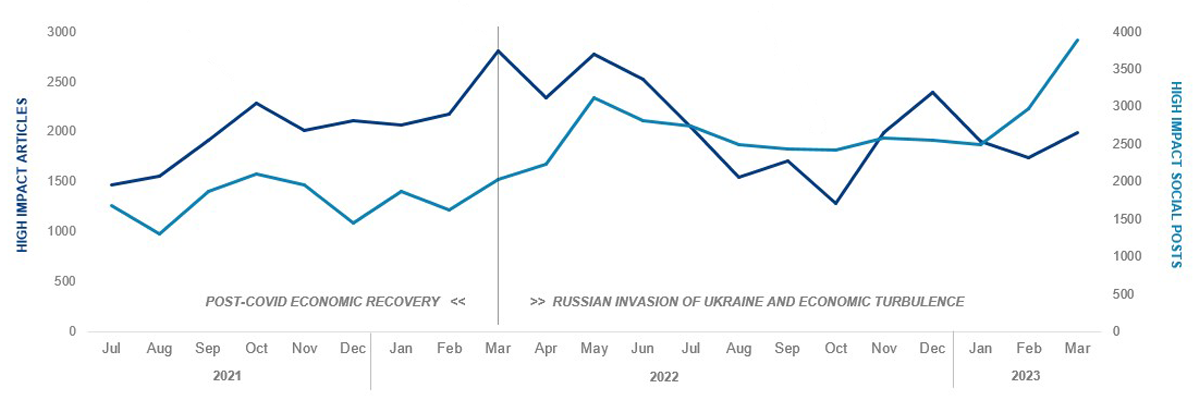
Similarly, ESG’s absence from the front pages hasn’t led to a decline in public interest. Our chart below shows that online searches have remained solid and even began to rise again at the start of 2023. Inflation, interest rates and the cost of living crisis caused a short-term plateau, but public appetite for interest in the concepts of ESG has only continued to grow. This shows that an ‘always on’ approach to ESG will give brands a better chance to benefit from continued messaging around their commitments.
ESG Media Coverage vs Google Trends Data:
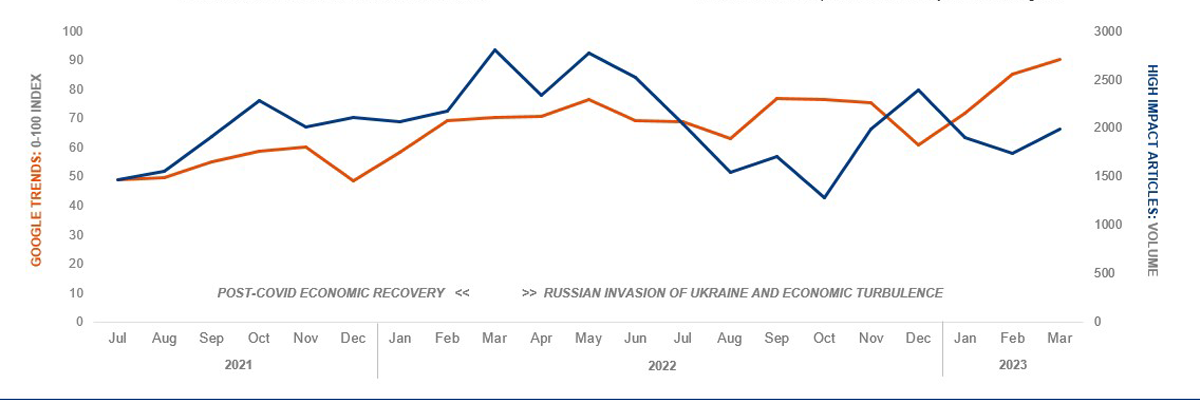
Lesson 2: Be wary of ESG being drawn into political debate
Ill-defined references to ESG can pose a risk to brand comms, particularly as it becomes drawn into political discussion. Reaction to the recent US Presidential veto demonstrated the danger to brands that their commitments become part of broader ‘culture war’ topics. Cision research shows an uplift in certain politically-charged phrases in ESG conversation across social media. Comparing Q1 2023 to Q1 2022, the term “woke” saw a x11 year-on-year rise, “agenda” a x9 rise and a x2 uplift for “greenwashing”.
Recent sentiment analysis via Brandwatch (see chart below) shows an increasing amount of ESG social discussion tied to negative emotions. Brands must stay resolute in the ESG commitments they choose to make and be prepared to defend their relevancy when tied to business performance.
Percentage of social media ESG conversation with negative emotion (sadness, anger, fear & disgust):
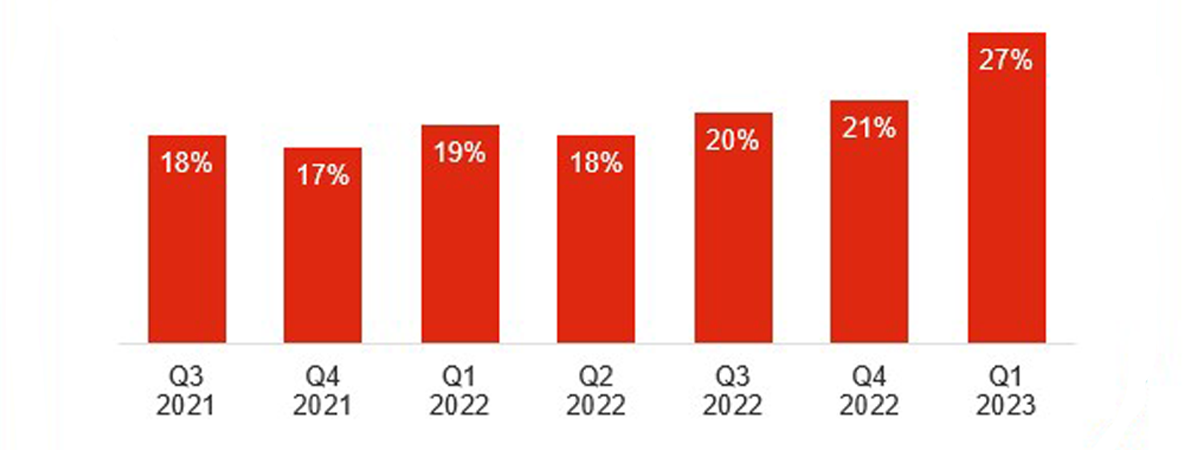
Lesson 3: Understand the finer details of ‘E’, ‘S’ and ‘G’ conversations
ESG is a broad label, so it’s important to remember that it’s made up of three very different factors in environmental, social and governance. From there, it’s possible to target areas that matter the most from a business perspective and tailor comms accordingly. This can help go beyond a simple acknowledgement of ESG support and instead focus on communicating the concrete detail behind efforts and publicise accountable goals.
The chart below pinpoints where the conversation lies in each ESG element. For example, environmental factors dominate on social media, with net zero commitments among the most well-defined issues. Discussion of the EU’s effective ban on the sale of petrol and diesel cars from 2035 featured prominently with debate over specific carve-outs for biofuels and broader implementation challenges for the industry.
Drilling down into social, our report shows that Diversity, Equity & Inclusion initiatives drive coverage, with many brands providing annual data to identify progress being made within their organisations. In governance, meanwhile, the responsibility of company boards towards ESG criteria led debate, especially in the United States, ahead of ethics, executive salaries and corruption.
Traditional and Social Share of Voice Across ESG Factors:
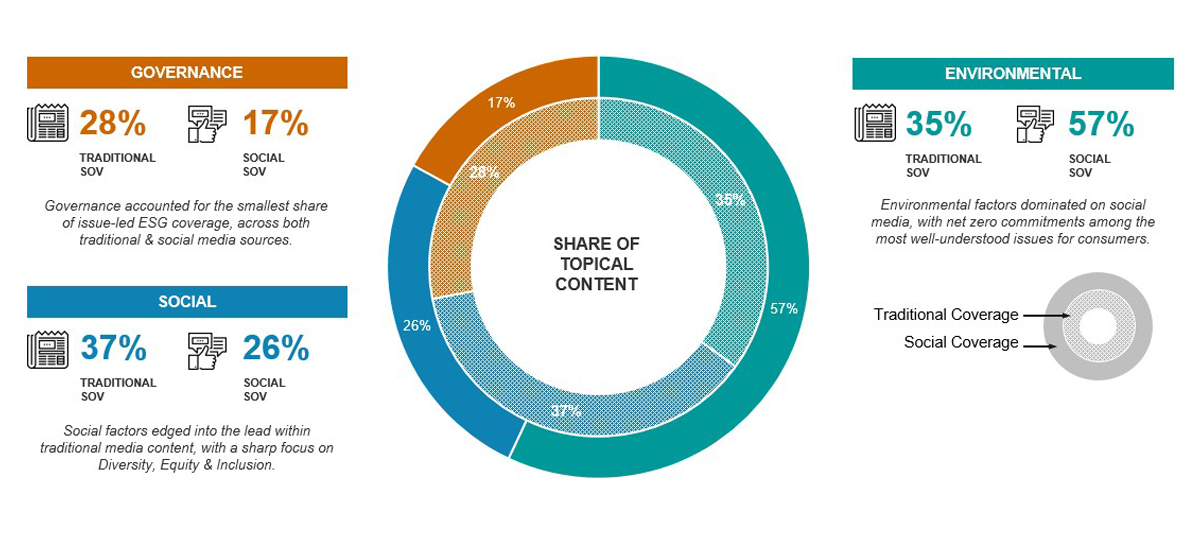
These charts hopefully go some way to help illustrate the shifting and complex nature of the debate – and give comms teams some food for thought on how to continue messaging around specific ESG criteria and initiatives.
If you’d like to learn more then download the full report or reach out and speak to one of our Insights experts today.
Most Recent Posts
Cision Resources
-
E-books and Guides
Comprehensive how-to guides on strategy and tactics
-
Case Studies
What are other brands doing – and how can we learn from them?
About Scott Newton
Scott is a Senior Director at Cision, building bespoke media intelligence solutions to address the challenges of communication professionals. With almost ten years of experience, Scott specialises in combining audience data, media outputs and organisational outcomes to measure the impact of communications activities.
Learn More. Do More. demo new
PR Tips, Case Studies, and Product Updates

[On-Demand Webinar] The Next Generation of Media Intelligence: From Gorkana to CisionOne
Explore CisionOne, a revolutionary media intelligence platform, and the evolution of Gorkana. Learn key features and strategies from Luke Williams, CisionOne Product Marketing Manager. Elevate your media outreach to new heights!


